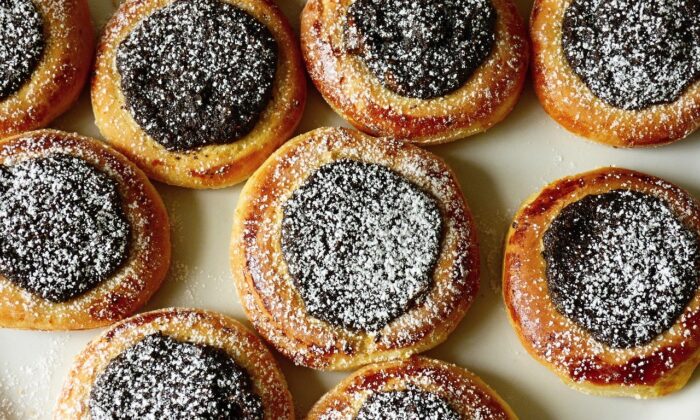
As a kid, I loved when my Slovak grandmother would make kolache, round sweet-bread pastries with prune or poppy seed filling. Kolace are considered to be Czech, but deliciousness knows no borders, and the neighboring cultures picked them up—especially the Slovaks, whose similar language uses the same word. While in Czech a kolach (kolac) (KOH-lahch) is singular and kolache (kolace) (ko-LAH-chee) is plural, the latter is sometimes used in the United States as singular. So you may sometimes hear kolaches (ko-LAH-chees) for the plural of the word when stateside.
Say it as you will, but I had never heard any form of the term outside of our family and its Czech/Slovak enclave in the Wisconsin Northwoods. So when I lived for a year in Houston and found not just kolache for sale in bakeries, but kolache franchises (see Kolache Factory), I discovered our family’s little pastry was a regular movement. But what made Texas so kolache-friendly?
Enter the Czexans
In the 19th century, an abundance of land to settle and a list of grievances against the old-world homeland compelled waves of Czech immigrants to sail halfway around the world to Texas. Those grievances included various political frustrations, ranging from feudalism and nationalism within the ruling Austrian Empire to religious persecution, conscripted military service, and a lack of freedom of the press.
Birds of a feather flock together, and today you can find many Texas communities with Czech roots. A region known as the Texas Czech Belt is a line of towns and counties that starts less than an hour south of Dallas and runs about 180 miles straight down the map to the town of Yoakum, Texas, just south of I-10 between Houston and San Antonio.
Cultural centers and museums are abundant, as are Czech festivals, as those places proudly celebrate their roots. But if there’s anything that tends to last long after the generations have passed, it’s food. And the Czech kolach is the star of the show.
Makings of the Kolache
kolach, as with a croissant or Danish pastry, is made using yeast, resulting in a more bread-like character, rather than cakes, cookies, or pie crusts. pastry is circular and measures about 3 to 4 inches in diameter. filling is laid into an open depression in the middle, though I’ve also seen them with the pastry corners folded up together over the top to allow the filling to peek out of little openings after baking.
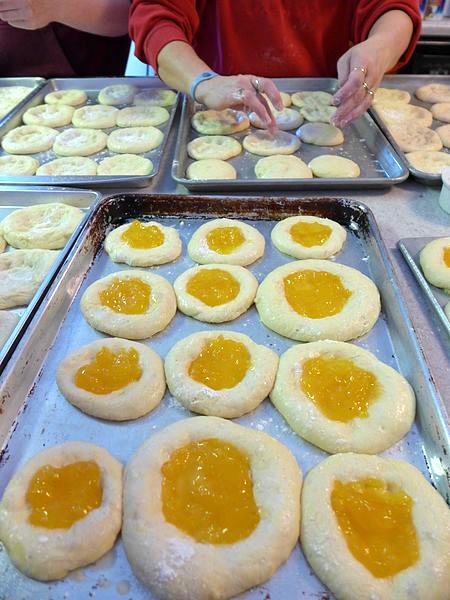
Traditionally, in the Old World, fillings were limited to local ingredients: poppy seed, prune, apricot, cherries, and farmer’s cheese. But new lands bring new traditions, often driven by experimentation and whatever’s available.
In Texas, you get all sorts of fillings: blueberries, pineapple, cherries, apples, pecans, cream cheese, and chocolate coconut cream, to name a few.
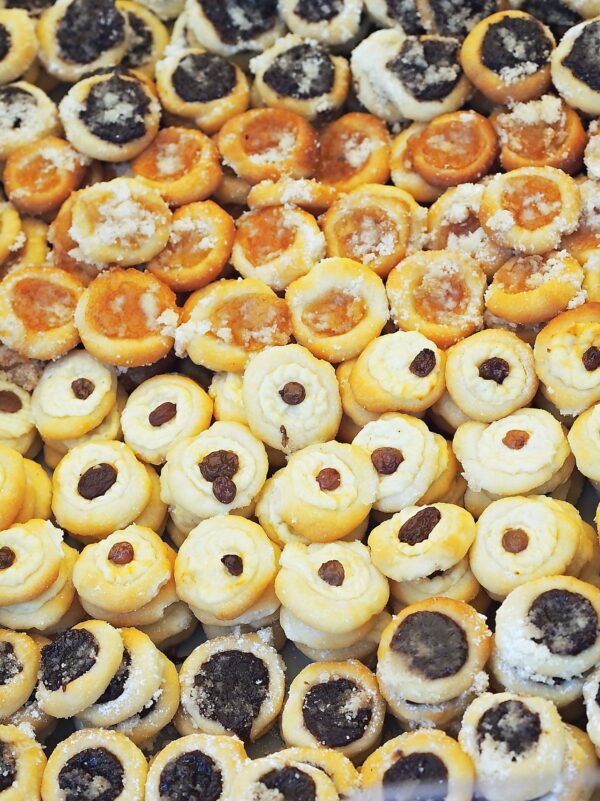
At a franchised Kolache Factory in Houston, I once squinted at—and ordered anyway—a sausage wrapped in kolach fashion. This, to be honest, is no longer a kolach, but a klobasnek (plural klobasniky), a recent and delicious creation originating in the Czech immigrant population in Texas. To many Americans, a sausage in a pastry is a “pig in a blanket.”
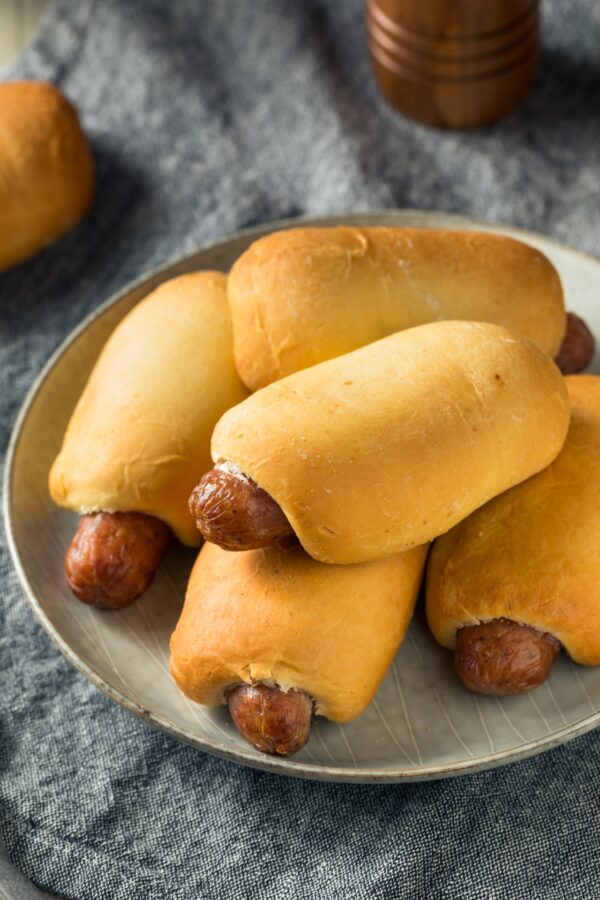
true kolach is sweet, never meat-filled or savory.
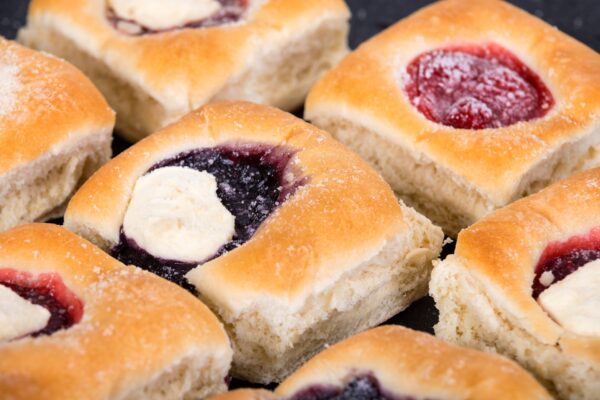
Battle for the Best Kolach
So where can you find the best or the truest kolaches? Those are opinions folks fight you over with a passion. A good place to start is with festivals dedicated to the pastry.
26th Annual Kolache Fest, one of the largest such festivals, takes place on Sept. 25 in Hallettsville, Texas. More than 3,000 people attend and gobble up the thousands of kolache produced by the local Kountry Bakery, which uses the recipes passed down by three generations of the Czech American Besetsny family. If you ever plan to attend, expect polka music, a car show, a parade, arts and crafts, a BBQ cook-off (it’s still Texas), loads of other food, a kolache-eating contest, and a 5K run to burn off some of those calories. Central to the festival is a bake-off, the winner of which is crowned the Kolache Queen. It’s a huge deal for a sizeable Czech community.
In 1989, the Texas state Legislature declared the town of Caldwell the “Kolache Capital of Texas.” city of West received similar honors as the “Home of the Official Kolache of the Texas Legislature” in 1997. Both of those places also have festivals that honor kolache. Draw a line through all three on the map and you’ve got the Czech Belt.
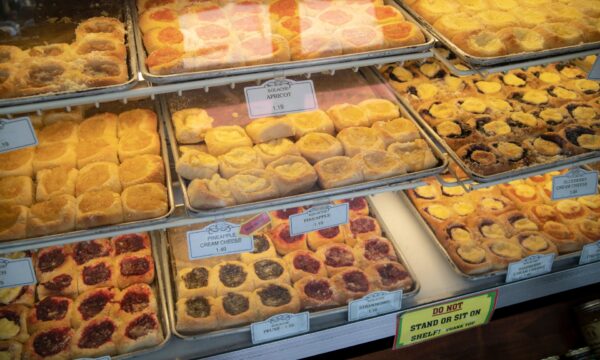
Always the second Saturday of September, the Burleson County Kolache Festival, held in Caldwell, celebrated its 36th year in 2021. Septuagenarian Joe Rycalik, a local Czech speaker, opened the festival in the Czech language. Another proud local, 40-year-old Zach Zgabay, who traces his roots all the way back to what’s now Czechia, or the Czech Republic, felt that language played an important part in the preservation of culture, so he returned to college to learn Czech. If Rycalik retires, Zgabay may one day open the festival in a similar fashion.
Several local bakeries collaborated to bake roughly 12,000 kolache. y went on sale at 8 a.m. and sold out by 2 p.m. festival also includes a baking competition, in 12 classes: Apple, Apricot, Cheese, Cheese & Other Combination, Peach, Poppy Seed, Prune, Other Fruit, and simply Other, as well as … uh-oh … Sausage, Meat & Cheese Combination, and Other Meat?
I asked Susan Mott, director of the Burleson County Chamber of Commerce, which organizes the festival, about the inclusion of meat.
“It is such a controversy,” she said with a laugh. “I tell you what, my 19-year-old loves those, and we call those sausage and cheese kolaches—but they are not. Any real Czech will tell you those are called klobasnicky, not kolaches. Real kolaches are made with fruit, not meat.”
Mott married into a Czech family, but her husband’s cousin taught her to make the traditional pastry, commonly made in large batches and typically brought out for weddings back in the Old World. Mott made a giant batch together with her husband’s cousin: “We baked 25 dozen in 2019. Took us about 8 hours.”
re’s also an activity I might be more inclined to participate in: Kolache Eating. But if you’re not in Texas, you may have to bake your own.
RECIPE: Apricot Kolache
Pezou : On the Kolache Trail: Tracing the History of Texas’s Favorite Pastry